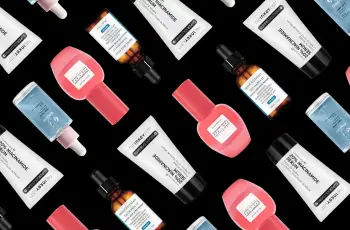
Do I Need To Wash My Face After a Sheet Mask? Here’s the Expert Answer
Sheet masks have become a staple in skincare routines across the world—and for good reason. They’re easy to use, feel luxurious, and leave your skin glowing and hydrated.
But a common question that pops up again and again is: Do I need to wash my face after using a sheet mask?
The short answer is: No, you usually don’t need to rinse your face after a sheet mask. But there’s more to it than that.
In this guide, we’ll explain:
Why you don’t need to wash off sheet mask serum
When it might be helpful to rinse
How to prep your skin before using a mask
How exfoliation and steaming can boost your mask’s effects
What to do after your mask for best results
Let’s dive in.
The Purpose of a Sheet Mask
Unlike traditional face masks that require rinsing—such as clay or mud-based formulas—sheet masks are soaked in serums that are meant to stay on your skin.
These hydrating and nourishing formulas are designed to absorb into the skin, not be wiped away.
Think of a sheet mask as an ultra-concentrated serum delivery system.
When you remove the sheet, your skin is left coated in active ingredients—like hyaluronic acid, glycerin, peptides, and botanical extracts. Letting those ingredients fully absorb is key to seeing results.
Why You Don’t Need to Wash Your Face After a Sheet Mask
You wouldn’t rinse off your moisturizer or serum after applying it, right? The same idea applies here.
The serum left behind after using a sheet mask is full of beneficial ingredients that continue to nourish your skin even after the mask is removed.
Washing your face afterward would just waste those ingredients.
Instead, gently massage any remaining serum into your skin using upward strokes. You can even extend it to your neck and décolletage for added benefit.
Is It Ever Okay to Wash Your Face After a Sheet Mask?
There are only a few situations where rinsing your face after a sheet mask might be appropriate:
1. The Serum Feels Sticky or Heavy
Some masks leave behind a sticky residue. If it feels uncomfortable, lightly rinse your face with lukewarm water or follow with a toner.
2. You’re Having a Skin Reaction
If your skin becomes red, itchy, or irritated after using the mask, rinse it off immediately and apply a calming product like aloe vera or ceramide cream.
3. You Used a Mask With Too Many Active Ingredients
If your mask is packed with AHAs, BHAs, or vitamin C, and you’re using other actives in your routine, it may be wise to rinse it off to avoid overloading your skin.
But in general? No rinsing is required.
What About Eye Masks? Do I Wash Those Off Too?
The answer is the same—no, you don’t need to wash your face after using an eye mask. Most under-eye masks contain a high concentration of hydrating serum. Let it absorb fully for maximum benefit.
Pat any remaining serum gently into the delicate eye area using your ring finger. Avoid rubbing, which can irritate thin skin.
Should I Exfoliate Before a Sheet Mask? Yes—Here’s Why
If you want your sheet mask to perform at its best, prepping your skin beforehand is essential. That starts with exfoliating.
Exfoliation removes the dead skin cells and excess oils sitting on the surface of your face. This not only clears the way for the mask’s ingredients to sink in but also helps:
Unclog pores, Even out skin tone, Smooth texture, Improve radiance
Think of it as clearing a path. If there’s debris on the surface (aka dead skin cells), your expensive serum-soaked mask can’t reach the skin layers that actually need it.
Understanding Your Skin’s Layers
To understand how a sheet mask works, it helps to know what’s happening underneath:
1. Epidermis
The outermost layer of your skin. This is where dirt, oil, and dead cells build up. Exfoliating clears this layer, prepping it for product absorption.
2. Dermis
This is the middle layer. It contains sweat glands, connective tissue, and hair follicles. This is the layer most sheet masks aim to treat.
3. Hypodermis
This is the deepest layer made up of fat and tissue. Sheet masks don’t typically penetrate this deep, but hydration helps support it over time.
So, if your epidermis is clogged with debris, even the best sheet mask won’t be as effective. Exfoliation opens the door.
Types of Exfoliation: Which One Should You Use?
There are two main types of exfoliation: chemical and mechanical.
Chemical Exfoliation
This involves acids that dissolve dead skin cells.
AHAs (Alpha Hydroxy Acids): Great for dry or sensitive skin. Examples include glycolic acid, mandelic acid, and lactic acid.
BHAs (Beta Hydroxy Acids): Ideal for oily or acne-prone skin. The most common one is salicylic acid, which penetrates deep into pores.
These are generally more gentle and effective than scrubbing.
⚠️ Mechanical Exfoliation
This includes scrubs and tools. Be cautious—not all physical exfoliants are skin-friendly.
Avoid products with crushed fruit pits or overly abrasive grains. They can cause tiny tears in the skin, leading to irritation.
What About Microbeads?
You may remember microbead scrubs being popular years ago. Thankfully, they’re now banned in the UK and most of Europe due to environmental damage.
Instead, opt for sustainable exfoliating powders, rice enzymes, or biodegradable particles.
One More Step Before the Mask: Steam Your Skin
After cleansing and exfoliating, you’ll get even better results from your sheet mask if you open your pores. That means adding steam.
Here’s how to do a simple facial steam:
Boil water and pour it into a heat-safe bowl.
Drape a towel over your head.
Lean over the bowl (carefully!) and trap the steam.
Steam for 5–10 minutes, keeping your eyes closed.
This process softens the skin and enhances absorption. Think of it like prepping soil before planting seeds—your mask is the nourishment.
After the Mask: What Should You Do Next?
Once your mask is removed, your skin is hydrated, dewy, and prepped for the rest of your routine. Here’s what to do next:
Massage In the Remaining Serum
Use clean fingertips to press the leftover serum into your face, neck, and even hands.
Apply a Toner (Optional)
Choose one without strong acids. Floral mists or hydrating toners help refresh the skin.
Add a Serum or Treatment
You can layer on a serum that targets your concern—hydration, brightening, anti-aging—if your skin feels like it needs more.
Seal with Moisturizer
Lock everything in with a nourishing cream. For nighttime, choose a barrier-repair or peptide-based moisturizer. For daytime, follow with SPF.
Can I Use a Sheet Mask Daily?
It depends on the ingredients and your skin type. Hydrating masks with ingredients like hyaluronic acid can be used daily. Brightening or exfoliating masks should be limited to 2–3 times a week.
If your skin feels irritated, tight, or sensitive, cut back on frequency. Listen to what your skin is telling you.
Best Practices for Sheet Masks
Store sheet masks in the fridge for a soothing, cooling effect.
Use clean hands to apply and remove your mask.
Don’t reuse sheet masks. They’re single-use for a reason.
Check the expiration date. Expired masks may be less effective or irritating.
Always patch test new products to avoid reactions.
Bottom Line: No, You Don’t Need to Wash Your Face After a Sheet Mask
Unless the product label says otherwise, don’t rinse after using a sheet mask. Let those hydrating, soothing ingredients soak in and continue working.
But remember—what you do before the mask matters too. Cleanse, exfoliate, steam, and prep your skin to make the most of your mask.
A sheet mask can be a powerful step in your skincare routine—when done right. Give your skin the full spa treatment at home, and it’ll thank you with a radiant, healthy glow.
Want More Skincare Tips?
Check out our full skincare series on YouTube @TheGreenSofa for expert how-tos, product recommendations, and behind-the-scenes beauty insights. Don’t forget to subscribe for weekly updates!


